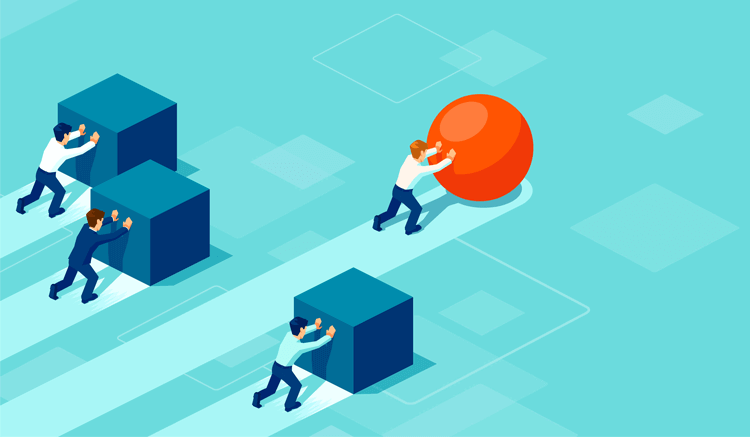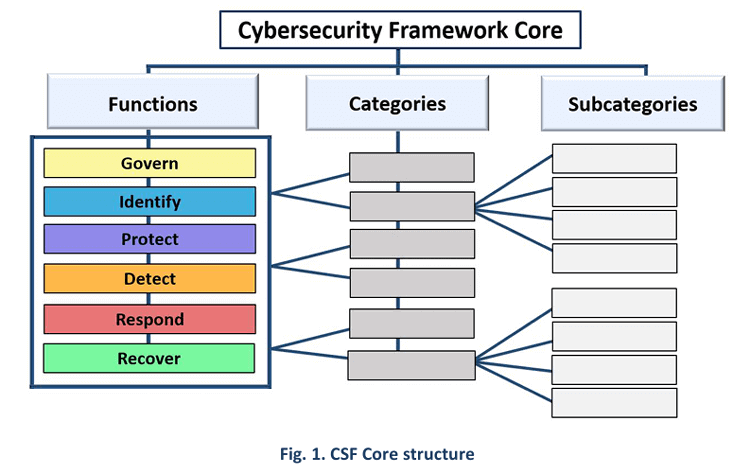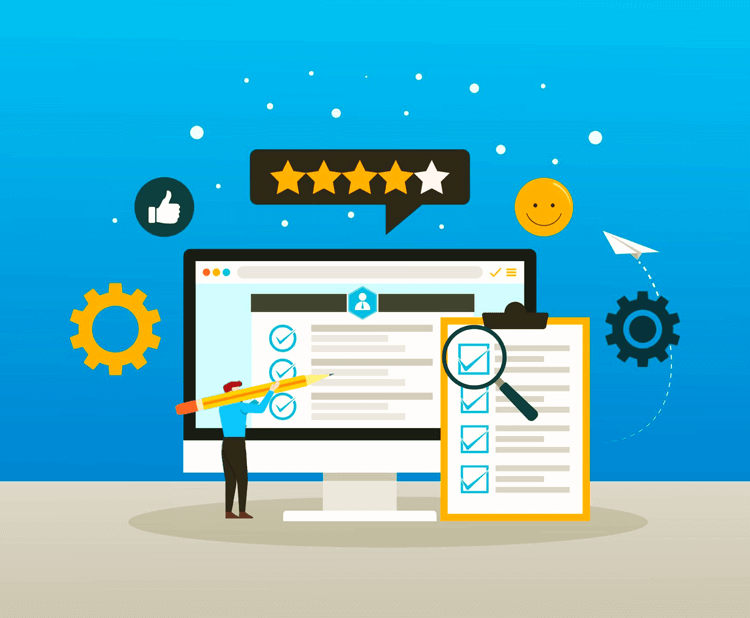7 Ways to Enhance IT Efficiency: Practical Tips and Strategies for IT Professionals
While productivity often gets the spotlight, it's IT efficiency that ensures your systems are running smoothly, resources are utilized effectively, and costs are kept under control. Downtime or other interruptions with your software and systems can cripple your business from a financial and reputation standpoint.
This post will guide you through the essential components of IT efficiency, why it is vital for your organization, and most importantly, provide actionable steps to enhance this function in your operations.

What is IT Efficiency?
IT efficiency refers to the optimal use of resources to achieve the best possible performance with the least waste of time, energy, and cost. Resources can include hardware and software, as well as personnel.
IT efficiency involves streamlining processes, minimizing redundancies, and maximizing resource utilization to help make sure that IT operations run smoothly and effectively.
IT Efficiency vs Productivity vs Effectiveness
While the terms are often used interchangeably, they highlight different priorities:
- Productivity: Focuses on the quantity of output, such as how many tickets are closed per day
- Efficiency: Achieves results with minimal use of resources
- Effectiveness: Measures if outcomes actually meet business needs
Unlike productivity, which focuses on output, IT efficiency emphasizes doing more with less while maintaining or improving the quality of IT services.
An IT team could be productive but inefficient (resolving many tickets slowly or with high cost), or efficient but ineffective (resolving issues quickly but without long-term fixes). True success balances all three.
IT Efficiency by Role
Further, IT efficiency is viewed or measured differently depending on the role of the people involved:
- CIOs/Executives care about cost reduction and scalability
- IT Managers need metrics on team productivity and resource usage
- Help Desk Agents focus on tools that reduce ticket-handling time
Planning and structuring strategies and process initiatives by role keep improvements aligned with both operational and business goals.
Common Challenges to IT Efficiency
Lastly, in trying to improve efficiency across IT, organizations often face these common difficulties:
- Legacy systems that drain resources and are expensive to maintain
- Teams not communicating well, which end up duplicating work instead of collaborating
- Relying too heavily on manual processes, delaying response times
- Lack of visibility into good IT performance metrics
Obviously to be successful then, these issues should be kept in mind when building plans and strategies for streamlining IT.
What are the Components of Achieving IT Efficiency?
IT efficiency is comprised of several critical components that work in harmony to optimize your technology environment:
- Hardware Optimization: Ensuring that your equipment is reliable, scalable, and up to date. Does your hardware meet or exceed that which your competitor uses?
- Software Optimization: Using the right tools and systems tailored to your business and clients' needs. Is the web hosting service you use creating the ideal consumer experience?
- Process Improvement: Streamlining workflows and eliminating inefficiencies. How can you improve the speed of troubleshooting when you experience downtime?
- Resource Management: Maximizing the use of available assets and resources. Can you find a provider that offers both web hosting and data security all-in-one?
- Automation: Reducing manual effort and enhancing consistency across operations. What processes can be handled by artificial intelligence in order to free up your employees to handle other important tasks.
7 Ways to Improve IT Efficiency
Improving IT efficiency requires a focused approach. Here are 7 actionable strategies you can implement to boost efficiency in your IT operations:
-
Conduct Regular IT Audits
Regularly assess your IT systems to find inefficiencies, such as outdated hardware or slow processes, and take action to improve them. For example, auditing your network usage may reveal underused servers that can be consolidated to save costs.
-
Optimize Hardware Usage
Ensure existing hardware is fully utilized by reallocating resources where needed. If your servers are underperforming or overburdened, upgrade or redistribute workloads to improve performance.
-
Update Software Tools
Always use the latest software versions to maintain security and efficiency. For example, upgrading to cloud-based project management tools can streamline collaboration and reduce manual errors.
-
Implement Automation
Automate repetitive tasks like software updates or data backups to save time and reduce errors. Automation tools can handle ticket routing or generate performance reports automatically. This can allow your team to focus on higher priority tasks.
-
Train IT Staff Continuously
Provide ongoing training to keep your IT team up to date with emerging technologies, like cloud infrastructure or cybersecurity trends.
-
Enhance Security Protocols
Implement efficient security measures, such as automatic patch updates or multi-factor authentication, to protect against breaches.
-
Adopt Cloud Solutions
Shift workloads to the cloud for greater flexibility and scalability. For example, adopting cloud storage can reduce hardware costs and make scaling up easier as your business grows.
5 Reasons Why IT Efficiency is Important
- Cost Savings: Efficient IT operations help reduce unnecessary expenses, leading to significant savings and better allocation of resources. As an example, this could be the avoidance of regular hardware failure, or software downtime.
- Enhanced Performance: When IT systems are efficient, they perform better. This can lead to faster and more reliable services that support overall business goals. The faster the software, the quicker you can get to your next call.
- Improved Security: Efficient IT practices ensure that security measures are robust and consistently maintained. This can help reduce the risk of data breaches and downtime.
- Better Resource Utilization: IT efficiency ensures that all resources--hardware, software, and personnel--are used to their fullest potential, avoiding waste and maximizing output.
- Scalability and Flexibility: Efficient IT systems are more adaptable, making it easier to scale operations as your business grows and evolves.
How Giva Can Help
Giva's IT Help Desk in the Cloud significantly improves IT efficiency by streamlining support operations and enhancing service delivery. With a scalable, easy-to-use platform, Giva helps your IT team reduce downtime and handle growing demands more effectively.
Key features include:
- Automated Workflows: Minimize manual tasks like ticket routing, allowing your IT team to focus on more strategic initiatives.
- Customizable Dashboards: Get real-time insights into key metrics, helping you monitor performance and make data-driven decisions.
- Scalability: Easily adapts to your organization's growth, seamlessly integrating new services or users.
Book a free Giva demo to see our solutions in action, try Giva's help desk software for free.
Key Metrics for Measuring IT Efficiency
To effectively improve IT efficiency, it's crucial to measure and track the right metrics. These metrics provide insights into how well your IT systems are performing and where there might be opportunities for improvement. Here are some key metrics to consider:
- System Uptime: Perhaps the most important of the bunch, this metric measures the percentage of time that your IT systems are operational. Higher uptime indicates greater efficiency, as it means less downtime and fewer disruptions to business operations.
- Incident Response Time: Tracks the average time it takes for your IT team to respond to and resolve issues.
- Resource Utilization Rate: Assesses how effectively your IT resources, such as servers, storage, and bandwidth, are being used. High utilization rates indicate that resources are being maximized without overburdening the system. If usage is high and systems are slow, it may be time to consider scaling up your service.
- Cost Efficiency: Evaluates the cost-effectiveness of your IT operations by comparing the costs incurred to the outcomes achieved. This can include the cost per service ticket, cost per user, or overall IT budget efficiency.
- User Satisfaction: Gauges how satisfied end-users are with the IT services provided. This can be measured in many ways, however post-service surveys and follow-up messages/calls can provide a good base.
- Change Success Rate: Monitors the success rate of changes implemented in your IT environment, such as software updates or new system integrations.
Read More: Comprehensive Guide to IT Redundancy and Why It is Essential
The Bottom Line: Elevating IT Efficiency for Business Success
IT efficiency is critical for ensuring smooth operations, optimizing resource use, and minimizing costs. By implementing key strategies and tracking relevant metrics, you can continuously improve the performance of your IT infrastructure. Start today by leveraging tools like Giva's IT Help Desk in the Cloud to streamline your IT operations and boost efficiency.





